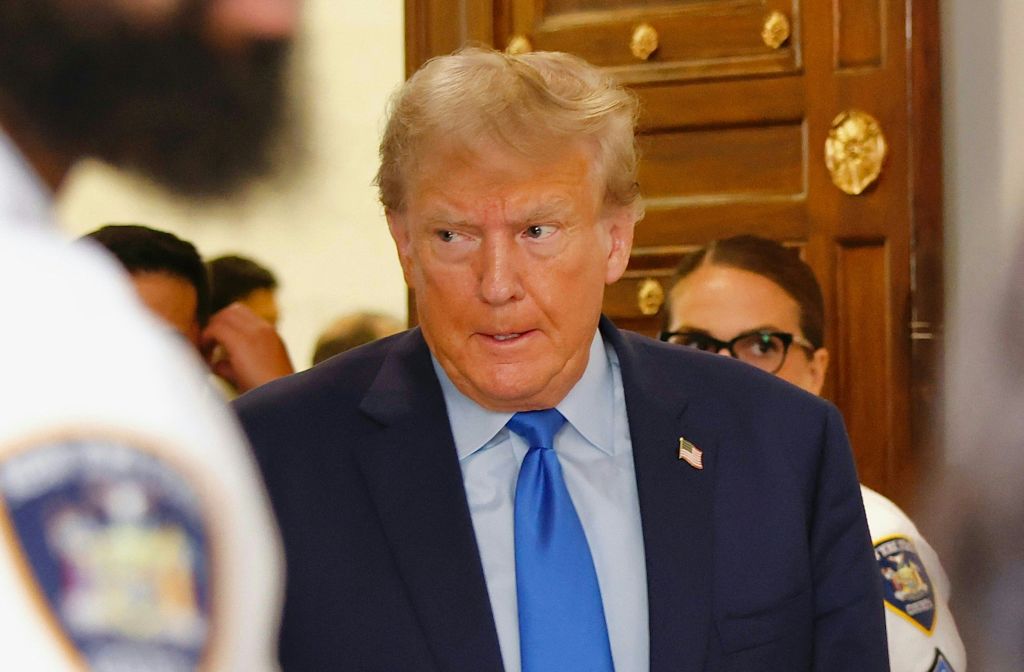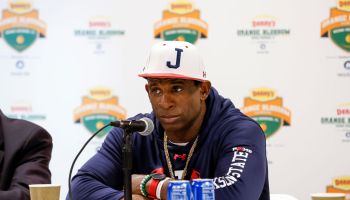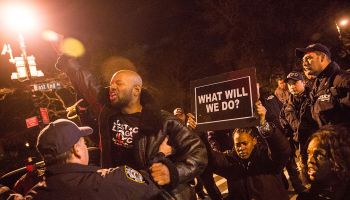President Barack Obama’s (pictured center) new “My Brother’s Keeper” initiative, aimed at addressing employment and education challenges for young men of color, has been lauded by many as a monumental move by the first Black president to uplift one of America’s most beleaguered subsets. It is indeed cause for excitement, as it is the first formal attempt on behalf of the American government to address some glaring disparities. “My Brother’s Keeper” has some tough work ahead of it, however: In America’s current political and racial climate, the program will be saddled with strengthening interventions while also dispelling comfortable narratives of pathology that have too long been used to justify inaction.
SEE ALSO: Study: Both Public, Police View Black Kids As Older, Less Innocent Than Whites
The White House has identified “the problem.” In a fact sheet detailing the program’s efforts, the Administration explains that by fourth grade, 86 percent of Black boys and 82 percent of Hispanic boys are reading below proficiency levels — compared to 54 percent of White fourth graders. Young Black and Hispanic men also account for almost half of the country’s murder victims each year, and they are disproportionately unemployed and involved in the criminal justice system.
Now, what one thinks the cause is for these dismal statistics is likely to be the greatest determining factor in planning interventions.
And at the core of conversation around “My Brother’s Keeper” is the question of why young men of color experience such awful outcomes. Judging by the plan outlined by the White House, the President perhaps believes the cause is institutional disadvantage. That places responsibility largely at the feet of American institutions to the chagrin of many.
White House Senior Adviser Valerie Jarrett appeared on FOX’s “O’Reilly Factor” soon after the President announced the initiative from the East Room. What host Bill O’Reilly said to Jarrett perfectly demonstrates opposition to the initiative.
“You have to attack the fundamental disease if you want to cure it,” O’Reilly told Jarrett. “You’re gonna have to get people like Jay-Z, Kanye West, all these gangsta rappers to knock it off…[They] idolize these guys with the hats on backwards, and the terrible rock-rap lyrics and the drugs.”
It’s a familiar trope from O’Reilly and others, the go-to response to any suggestion of government interventions on behalf of people of color. What it highlights is a dogmatic belief in the fundamental sickness of the cultures of Black and brown people — a narrative rooted in White supremacy and formalized in the 1965 Moynihan Report, reaching its peak popularity in the 1990s with “gangsta rap” as a symbol.
It should go without saying but that narrative is false.
The Moynihan Report concluded in part — barely one year after the Civil Rights Act outlawed racial discrimination, segregation and voter suppression – that the root of Black poverty in America was a “tangle of pathology…capable of perpetuating itself without assistance from the White world.” To be clear: the “no coloreds” signs weren’t all yet down before a pathological Black culture was being offered up as the explanation for disparities. And, despite differences in culture and history, the same narrative has been applied to Hispanic Americans seemingly for no reason other than convenience.
So, in 2014, Bill OReilly and many other Americans think that the downfall of young men of color is the “gangsta rap” produced by such controversial figures as frustrated fashion designer Kanye West and Jay-Z who admittedly doesn’t “pop mollies” but rocks tuxedos by Tom Ford.
How other groups consume the same music en masse but remain impervious to its sinister influence is neither here nor there. That consideration is no more important than legal racism was in the time of Moynihan’s report.
And let’s not let the President off the hook completely.
He often plays into these notions, specifically whenever given the opportunity to address Black people. When he spoke at the commencement of hundreds of students at the historically black and all-male Morehouse College in May, he inappropriately lectured them about not making excuses. It was a theme he repeated in his “My Brother’s Keeper” speech.
“Part of my message, part of our message in this initiative is ‘no excuses’,” he said. “Government and private sector and philanthropy and all the faith communities — we all have a responsibility to help provide you the tools you need; we’ve got to help you knock down some of the barriers that you experience. That’s what we’re here for. But you’ve got responsibilities, too.”
To be clear, borrowing a phrase from President Obama, young people of color haven’t been making excuses. In fact, they’ve been problem solving while the adults were asleep at the wheel.
Research shows that in a number of areas — teen pregnancy, violent crime, and gradation rates — young people of color are making significant improvements. National teen pregnancy rates peaked in 1990 and have been falling ever since. They’re currently down 51 percent for Black teens and 40 percent for Hispanic teenagers, according to the Centers for Disease Control and Prevention.
In addition, from 1990 to 2012, the percentage of 25- to- 29-year-olds who attained a Bachelor’s degree or higher doubled for both Blacks and Hispanics, according to the National Center for Education Statistics. And, despite a murder rate that is still far too high, violent crime against and by young men of color has actually fallen sharply since the early 1990s, according to the U.S. Department of Justice’s Bureau of Justice Statistics.
Those accomplishments come as the result of small interventions made by individual, families, and communities.
Instead of disregarding them for a convenient comfortable trope, our nation must accept the fact that young people of color are just like all other young people and in need of the same opportunities.
Ultimately, “My Brother’s Keeper” will be judged by not just its political daring and intentions but its outcomes. And if the program is to be a success by producing real positive change in the lives of young men of color, it must start with a basic understanding of who those people are. That means the myth of minority youth too self-destructive to be helped must be confronted, interrogated and rooted out of popular imagination.
















